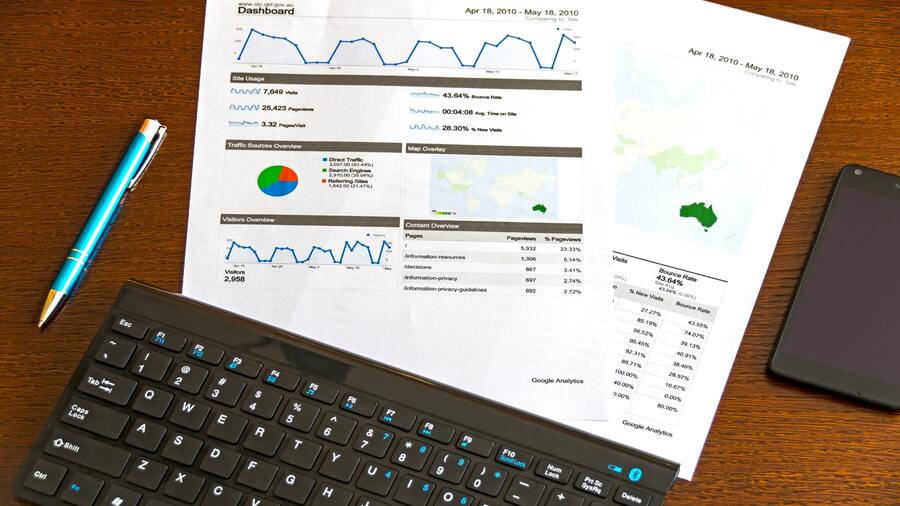In marketing, there is no one-size-fits-all approach. As business goals, consumer sentiment, and market trends continuously evolve, marketers must adapt their strategies to stay ahead. A critical element of this is measuring the success of marketing efforts. Effective measurement helps marketers understand campaign performance, identify areas for improvement, and make real-time adjustments. With access to rich data and tools for tracking results, marketers can optimize their campaigns for better ROI. In this article, we’ll explore the importance of campaign measurement, key metrics for tracking success, and strategies for optimizing campaign performance to drive better business outcomes.
What is Campaign Measurement?
B2B marketing campaign measurement is the process of evaluating the effectiveness of your marketing efforts against predefined goals. It involves tracking specific metrics and key performance indicators (KPIs) that help assess the performance of the campaign. Depending on the campaign’s goals, these metrics could include customer engagement, conversion rates, lead generation, and more. For account-based marketing (ABM) initiatives, measuring ABM campaign performance becomes critical to understanding engagement at the account level, pipeline influence, and revenue impact.
Typically, campaign measurement is done at the end of the campaign, but it can also be conducted in real time for immediate adjustments to improve results. Without proper measurement, you won’t know whether your campaigns reach the intended audience or deliver expected outcomes. This can lead to missed opportunities and wasted resources. By measuring campaign performance, you gain valuable insights into what strategies are working and which ones need improvement. This data allows you to make informed, data-driven decisions that optimize future campaigns and ensure a higher return on investment (ROI).
Campaign Performance Metrics for Evaluating Campaign Effectiveness
A successful marketing campaign performance hinges on understanding what’s working and what’s not. Here are six key campaign performance metrics that form the foundation of campaign performance analysis for evaluating the effectiveness of your marketing efforts:
Return on Investment (ROI)
ROI helps you measure the financial success of your campaign by comparing the revenue earned to the cost of the campaign. A high ROI indicates that your marketing efforts were profitable, making it a vital metric for understanding overall ABM campaign performance and long-term marketing campaign performance.
Return on Ad Spend (ROAS)
ROAS is essential for advertising campaigns, showing how much revenue you earned from your ads compared to what you spent. It plays a crucial role in marketing measurement by helping assess the effectiveness of your ad strategy. A low ROAS may suggest the need to adjust your ad targeting or messaging.
Conversion Rate
The lead conversion rate measures the percentage of people who took a desired action, such as making a purchase or signing up for a newsletter. This metric is critical to campaign performance analysis, providing insight into how well your campaign encourages engagement and action.
Cost Per Lead (CPL)
CPL tracks the cost of acquiring each lead. It’s especially important in B2B marketing, where lead nurturing is part of a longer sales cycle. This metric supports measurement in marketing by revealing the efficiency of your lead generation efforts.
Click-Through Rate (CTR)
CTR measures how many people clicked on your ad, email, or content. As part of your overall marketing campaign performance, CTR indicates the relevance and appeal of your messaging, guiding ongoing optimization.
Cost Per Acquisition (CPA)
CPA measures how much you spend to acquire each new customer. It is particularly useful in brand awareness campaigns and reach-focused campaigns and is a key element in campaign performance analysis and cost-efficiency evaluation.
How to measure the success of a marketing campaign?
To effectively track the performance of your B2B marketing campaign, a well-structured approach is crucial. Follow these major steps to ensure you’re measuring the right metrics and achieving your goals:
Step 1: Set Clear Goals
Establish clear, measurable objectives from the start. Whether it’s increasing revenue, generating leads, or boosting brand awareness, defining your goals will guide your tracking efforts. Consider using campaign performance frameworks like SMART (Specific, Measurable, Achievable, Relevant, Time-bound) or OKRs (Objectives and Key Results) to create actionable and measurable targets.
Step 2: Define Key Performance Indicators (KPIs)
Identify the metrics that best align with your goals. KPIs such as conversion rate, bounce rate, or cost per lead help gauge the success of your campaign. By defining your KPIs in advance, you ensure you’re focusing on the most relevant data points to assess performance.
Step 3: Establish a Campaign Time Frame
Determine the start and end dates for tracking. Whether it’s a short-term campaign or an ongoing initiative, a clear time frame allows you to measure progress and assess performance within a defined period. This helps you stay focused on achieving milestones and make adjustments as needed.
Step 4: Choose the Right Marketing Tools
Select the right tools for campaign tracking. Google Analytics, social media insights, and email marketing platforms provide essential data to analyze campaign performance. Additionally, using specialized tools like Google Campaign URL Builder or call tracking software helps refine your measurements.
Step 5: Monitor, Measure, and Adjust in Real-Time
Track your campaign’s performance consistently. Use a measurement schedule to track progress and adjust strategies as necessary. By measuring results throughout the campaign, you can make timely changes to campaign performance optimization and achieve desired outcomes.
How to Analyze Marketing Campaign Performance?
Analyzing marketing campaign data is essential for improving marketing effectiveness and achieving desired outcomes. Start by identifying trends and patterns within your data. Look for recurring themes or behaviours and use UTM parameters on campaign URLs to track the source and medium of your traffic. This approach ensures accurate attribution of website visits to specific campaigns.
Benchmark your performance against industry standards or previous campaigns to measure success and pinpoint areas needing improvement. Segment your data by demographics, geography, or behaviour for deeper insights into audience preferences and to better define your ideal customer profile (ICP). Regular data audits help maintain accuracy by removing duplicates and irrelevant information.
Once insights are drawn, leverage them to make informed decisions. Identify underperforming areas, such as low conversions or high bounce rates, and brainstorm solutions. Implement A/B testing to compare campaign elements like headlines or CTAs, ensuring you identify the most effective options.
Refine your targeting using data-driven insights about successful leads or customers, and adjust your messaging to better resonate with your audience. Campaign performance optimization is a continuous process: monitor performance, incorporate customer feedback, and iterate regularly to enhance results. You can fine-tune strategies and maximize your campaign’s impact by interpreting and acting on data effectively.
Conclusion
In today’s dynamic marketing landscape, campaign measurement is the cornerstone of success. By setting clear goals, tracking relevant metrics, and leveraging advanced tools, marketers can uncover actionable insights that drive meaningful results. Analyzing data helps identify strengths and weaknesses, refine strategies, and optimize performance in real time. Continuous monitoring and iterative improvements ensure that campaigns remain effective and aligned with business objectives. By mastering these practices, marketers can achieve better ROI, stronger audience connections, and sustained business growth.




